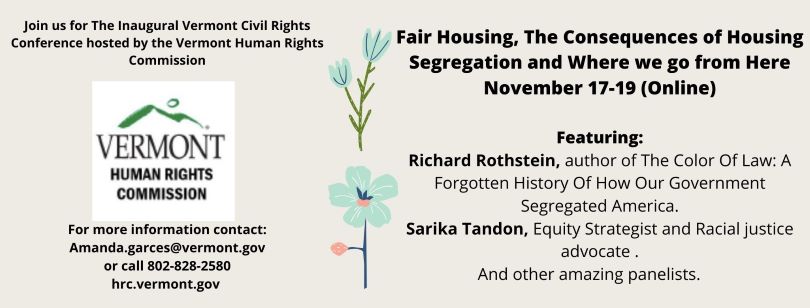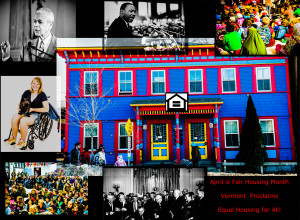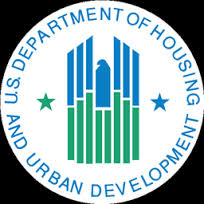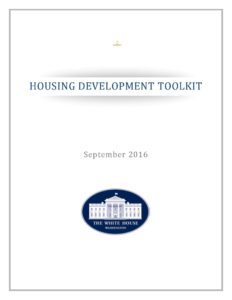Category Archives: civil rights
Vermont Civil Rights Conference this November
The Vermont Human Rights Commission is hosting the inaugural Vermont Civil Rights Conference on November 17-19, 2020. This year’s conference is focused on the theme of Fair Housing: The Consequences of Housing Segregation and Where we go From Here.

This three-day conference is free and open to the public, and features Richard Rothstein, author of The Color of Law, and Sarika Tandon, Equity Strategist and Racial Justice advocate.
Richard Rothstein is an American academic and author affiliated with the Economic Policy Institute, and a senior fellow, emeritus at the Thurgood Marshall Institute of the NAACP Legal Defense Fund. His current research focuses on the history of segregation in the United States with regards to education and housing, and he is most recently recognized for authoring The Color of Law. We’ve called on the expertise of Richard Rothstein many times in our Thriving Communities blog, most recently highlighting his Op-Ed in the New York Times here.
Sarika Tandon is an equity strategist and racial justice advocate. She consults, teaches, writes, researches, and collaborates at the intersection of race, equity, and environmental issues. Sarika is deeply committed to working within the environmental movement to address issues of racial and environmental injustice and to support the inherent power, brilliance, and well-being of communities of color. She also supports racial equity in nonprofit, education, criminal justice reform, and cultural spheres.
Other workshops include, “Housing Barriers in Vermont: Community Challenges & Collective Solutions – Moving the work forward collectively,” “Vermont’s Housing Crisis: State’s Consolidated Plan – What are we doing about it?” “Fair Housing Act: Critiques and Implications” and “Community Reflections on the Consequences of Housing Segregation and Where we go from Here.” Panelists include representatives from various housing and support organizations, state government, and fair housing advocates – including the CVOEO Fair Housing Project.
All community members are welcome to join. Please see below for additional information about the conference.
Register in advance: https://us02web.zoom.us/meeting/register/tZYtdOyqqzoqHtF6v3iTob9QIcRSvRLnuAux
After registering, you will receive a confirmation email containing information about joining the meeting.
The Vermont Human Rights Commission works to promote full civil and human rights in Vermont by enforcing laws and providing education around equal access to housing, places of public accommodation, and in state government employment. The Commission protects people from unlawful discrimination in housing, state government employment, and public accommodations. Learn more about the VHRC’s at https://hrc.vermont.gov/.
Closing Out Fair Housing Month: A Fair Housing Month Round Up
The Fair Housing Act at 50 | Harvard Joint Center for Housing Studies
Fair housing can and should be a centerpiece of efforts to expand economic opportunity, asserted Dr. Raphael Bostic, President and CEO of the Federal Reserve Bank of Atlanta, who gave the 18th Annual John T. Dunlop Lectureat the Harvard Graduate School of Design on Tuesday, April 10 (watch video). His talk, on the past, present, and future of the Fair Housing Act, was given one day before the 50th anniversary of President Lyndon B. Johnson signing the measure.
Bostic, who also served as Assistant Secretary for Policy Development and Research at the U.S. Department of Housing and Urban Development (HUD) from 2009 until 2012, explained that decades of research show the strong positive impacts that neighborhoods can have on children’s education and future earnings. Given this, he noted, it is in everyone’s interest to support efforts to expand opportunities for all families. “Fair housing is a key to economic mobility,” he explained. “It is an economic development issue as well as a community and personal development issue.” …
Read more-
Source: Housing Perspectives (from the Harvard Joint Center for Housing Studies)
The Harvard Joint Center for Housing Studies advances understanding of housing issues and informs policy.
Say It Loud: Renters’ Rights are Civil Rights! – Shelterforce
Photo by Abbey Hambright via flickr, CC BY-NC-ND 2.0
“Generations of racist government policies such as redlining, the razing of neighborhoods to build highways, and exclusionary zoning has created deeply segregated and unequal neighborhoods. These policies both prevented people of color from accessing resources where they lived and from moving to suburban neighborhoods where resources were being invested.”
“Advocates and renters argue that protecting tenants is good policy because it advances equity, economic opportunity, and even a healthier environment.”
Read full article from Shelterforce Source: Say It Loud: Renters’ Rights are Civil Rights! – Shelterforce
Thanks to Shelterforce for publishing such articles as this one.
[Shelterforce Note: This article is adapted from the IGNITE! Community Pitch Fest, held at the Grounded Solutions Intersections 2017 conference on Oct. 11, 2017. Out of 20 entries and 6 finalists, audience members chose Public Advocates’ pitch as the winner.]
Borrowed from “SHELTERFORCE” -10 Ways to Talk About Inclusionary Housing, Differently
Shelterforce blog by Sasha Hauswald – September 20, 2017
… Number 4 is one of my favorite. (Thriving Communities Editor)
” 4. Streamline barriers to development
Many jurisdictions have zoning code requirements that are so complex that it is nearly impossible to build anything without lengthy and unpredictable approval processes for special exceptions to the zoning code. Inclusionary done right can greatly reduce procedural barriers to new development.
Affordable housing requirements are often adopted in combination with area-wide up-zoning or enhanced flexibility to build, by right, a reasonably profitable multifamily building. In these cases, inclusionary housing programs can actually increase development activity. Most importantly, inclusionary housing policies establish clear and predictable expectations that local developers can plan around. “
April Fair Housing Month Activities in Burlington Vermont
Tell your friends, family and coworkers to participate. Some April activities will no doubt be happening in other states as well.
Be sure you scroll down using the scroll bar on the right of the text box to see both pages.
If you have questions write FHP@CVOEO.ORG
[pdf-embedder url=”https://www.thrivingcommunitiesvt.org/wp-content/uploads/2017/03/fair-housing-april2017-burlington-calendar1-2.pdf”]
What is Fair Housing Month about? HUD explains.
 Getting a head start on April in March –
Getting a head start on April in March –
Note: All the content below in this post is taken from a web site maintained by the U.S. Department of Housing and Urban Development.
is taken from a web site maintained by the U.S. Department of Housing and Urban Development.
In April, we come together as a community and a nation to celebrate the anniversary of the passing of the Fair Housing Act and recommit to that goal which inspired us in the aftermath of Rev. Dr. Martin Luther King Jr’s assassination in 1968: to eliminate housing discrimination and create equal opportunity in every community.
Fundamentally, fair housing means that every person can live free. This means that our communities are open and welcoming, free from housing discrimination and hostility. But this also means that each one of us, regardless of race, color, religion, national origin, sex, familial status, and disability, has access to neighborhoods of opportunity, where our children can attend quality schools, our environment allows us to be healthy, and [for us to grow] opportunities and self-sufficiency.
…commitment to fair housing is a living commitment, one that reflects the needs of America today and prepares us for a future of true integration.
History of Fair Housing –
On April 11, 1968, President Lyndon Johnson signed the Civil Rights Act of 1968, which was meant as a follow-up to the Civil Rights Act of 1964. The 1968 act expanded on previous acts and prohibited discrimination concerning the sale, rental, and financing of housing based on race, religion, national origin, sex, (and as amended) handicap and family status. Title VIII of the Act is also known as the Fair Housing Act (of 1968).
The enactment of the federal Fair Housing Act on April 11, 1968 came only after a long and difficult journey. From 1966-1967, Congress regularly considered the fair housing bill, but failed to garner a strong enough majority for its passage. However, when the Rev. Dr. Martin Luther King, Jr. was assassinated on April 4, 1968, President Lyndon Johnson utilized this national tragedy to urge for the bill’s speedy Congressional approval. Since the 1966 open housing marches in Chicago, Dr. King’s name had been closely associated with the fair housing legislation. President Johnson viewed the Act as a fitting memorial to the man’s life work, and wished to have the Act passed prior to Dr. King’s funeral in Atlanta.
Another significant issue during this time period was the growing casualty list from Vietnam. The deaths in Vietnam fell heaviest upon young, poor African-American and Hispanic infantrymen. However, on the home front, these men’s families could not purchase or rent homes in certain residential developments on account of their race or national origin. Specialized organizations like the NAACP, the GI Forum and the National Committee Against Discrimination In Housing lobbied hard for the Senate to pass the Fair Housing Act and remedy this inequity. Senators Edward Brooke and Edward Kennedy of Massachusetts argued deeply for the passage of this legislation. In particular, Senator Brooke, the first African-American ever to be elected to the Senate by popular vote, spoke personally of his return from World War II and inability to provide a home of his choice for his new family because of his race.
With the cities rioting after Dr. King’s assassination, and destruction mounting in every part of the United States, the words of President Johnson and Congressional leaders rang the Bell of Reason for the House of Representatives, who subsequently passed the Fair Housing Act. Without debate, the Senate followed the House in its passage of the Act, which President Johnson then signed into law.
The power to appoint the first officials administering the Act fell upon President Johnson’s successor, Richard Nixon. President Nixon tapped then Governor of Michigan, George Romney, for the post of Secretary of Housing and Urban Development. While serving as Governor, Secretary Romney had successfully campaigned for ratification of a state constitutional provision that prohibited discrimination in housing. President Nixon also appointed Samuel Simmons as the first Assistant Secretary for Equal Housing Opportunity.
When April 1969 arrived, HUD could not wait to celebrate the Act’s 1st Anniversary. Within that inaugural year, HUD completed the Title VIII Field Operations Handbook, and instituted a formalized complaint process. In truly festive fashion, HUD hosted a gala event in the Grand Ballroom of New York’s Plaza Hotel. From across the nation, advocates and politicians shared in this marvelous evening, including one of the organizations that started it all — the National Committee Against Discrimination In Housing.
In subsequent years, the tradition of celebrating Fair Housing Month grew larger and larger. Governors began to issue proclamations that designated April as “Fair Housing Month,” and schools across the country sponsored poster and essay contests that focused upon fair housing issues. Regional winners from these contests often enjoyed trips to Washington, DC for events with HUD and their Congressional representatives.
Under former Secretaries James T. Lynn and Carla Hills, with the cooperation of the National Association of Homebuilders, National Association of Realtors, and the American Advertising Council these groups adopted fair housing as their theme and provided “free” billboard space throughout the nation. These large 20-foot by 14-foot billboards placed the fair housing message in neighborhoods, industrial centers, agrarian regions and urban cores. Every region also had its own celebrations, meetings, dinners, contests and radio-television shows that featured HUD, state and private fair housing experts and officials. These celebrations continue the spirit behind the original passage of the Act, and are remembered fondly by those who were there from the beginning.
U.S. Department of Housing and Urban Development
Fighting Community Opposition in the Age of…Opposition
From the “Shelterforce Blog”, “Rooflines”
Posted in Shelterforce by Amy Clark on December 14, 2016
http://www.rooflines.org/4710/fighting_community_opposition_in_the_age_ofopposition/ via @Shelterforce
On Nov, 8, voters across the country heard the affordable housing call and approved numerous state and local housing funding measures that will make it possible for more of our neighbors to live in safe, healthy, and affordable homes. This was a real achievement in housing advocacy, but the work is far from over. Developers, local governments, and advocates must now move to convince the neighbors of proposed housing developments to accept more affordable homes into their communities.
The election that brought over 37 affordable housing measures to the ballot in eight states also elevated toxic rhetoric about people of color and other populations. The public discourse has changed, and that’s likely to affect our efforts to build support for affordable housing development and counter community opposition. Here’s what you may hear about affordable housing in your community, and how to prepare for it:
Racial animus. In the wake of the election, there have been many reports of hate-based harassment and intimidation across the country. An offending segment of our population feels newly empowered to use racist language in all types of situations. While racism and fear of difference have always been, at the very least, an undercurrent of some forms of community opposition, in recent years it’s largely been implied, not overt. You may see an uptick in overt racism in siting conversations.
What to do? While it would be satisfying—and, arguably, right—to call out racist language directly when you hear it, research tells us that this is likely to backfire, causing the speaker to defensively double-down on the prejudiced belief. Instead, a study this year found that “a short conversation encouraging actively taking the perspective of others can markedly reduce prejudice.” It argues for holding small-group conversations and facilitators trained to listen and find common ground.
Misinformation. You’ve likely heard much about the success of fake news during the presidential campaign. Misinformation this election cycle may have had a distinctive rightward bent, but don’t pat yourself on the back if you lean left. All of us are susceptible to information that confirms what we already believe, regardless of its factual accuracy. Don’t be surprised to see an increase in the misinformation about your work being posted online and handed around in anonymous flyers around the neighborhoods where you work.
What to do? Don’t write up a “frequently asked questions” page correcting the lies being told about your work. By emphasizing the misinformation—even when you later correct it—you’re just driving it deeper into peoples’ consciousness. Instead, first tell your truth (“Our apartments increase neighborhood safety.”), then signpost the misinformation and explain the motive behind it (“There is a myth circulating that affordable housing increases crime, promoted by a small new neighborhood group formed to fight our proposal.”), and finally give a brief, clear alternative explanation, repeated in graphics if possible (“In fact, by starting a neighborhood watch program and installing security cameras, we’ve helped create a 13 percent decrease in property crime in another neighborhood where we work. We want to work with you to have a similar positive impact here.”).
Ideological conflict. Research into persistent opposition to affordable housing has shown that spatial ideology—an individual’s set of beliefs around who can live in and use a particular place, and who has the right to participate in decision-making about a place—can be predictive of opposition to, or support of, affordable housing. The recent push to disenfranchise groups of Americans through voter ID laws and other restrictions is an example of a narrow conception of spatial rights, and the electoral contest was rife with rhetoric supporting a conscribed idea of to whom America truly belongs. Opposition may now more frequently focus on delegitimizing prospective low-income residents, perhaps as “not American” or simply “not from here.”
What to do? Unfortunately, ideology might be hard-wired, and thus addressing spatial ideology head-on might not be effective. At the same time, there are likely to be people in your community who believe lower-income people have an equal right to live in a place. Find these potential supporters by emphasizing the values of diversity and inclusion, and give this group a clear way to take action and vocalize support of your work.
Distrust of institutional authority. The success of populist presidential candidates from both parties points to, among other things, Americans’ growing distrust of institutions. Whether it’s in banks, the news media, or government itself, people across the political spectrum have lost faith. Unfortunately, affordable housing development connects to all sorts of things many of our neighbors have come to doubt: taxation, finance systems and entities, and zoning, just to name a few.
What to do? First, people who have lost trust will hear a developer mention “partnering with the government” and translate that into an attempt to paper over a profit-making arrangement. Step away from the marketing talk and use plain language to explain what you do, and why it is successful. Second, reframe the role of these perceived-suspect institutions. A new paper from Enterprise Community Partners and the FrameWorks Institute recommends that we help people understand the role of government in affordable housing by explaining, “the role of systems in shaping outcomes for people and … communities,” and by, “zooming out” to tell broader stories that explain the impact of housing issues on an entire community. You know your work is about more than simply units; help others understand this too.
Countering community opposition has never been easy, and I hope to hear that these predictions have not come true, but even if they do, our work can have a long-term impact on decreasing bias. There is evidence that white people living in diverse neighborhoods “endorsed fewer negative stereotypes, and [feel] closer to Blacks as a group.” When we create diverse, inclusive communities, we help decrease prejudice and division. That’s something truly worth fighting for.

White House Housing Development Toolkit
Executive Summary from the White House Housing Development Toolkit: September, 2016
[FYI Please note this toolkit was issued under President Obama’s administration.]
“Locally-constructed barriers to new housing development include beneficial environmental protections, but also laws plainly designed to exclude multifamily or affordable housing. Local policies acting as barriers to housing supply include land use restrictions that make developable land much more costly than it is inherently, zoning restrictions, off street parking requirements, arbitrary or antiquated preservation regulations, residential conversion restrictions, and unnecessarily slow permitting processes. The accumulation of these barriers has reduced the ability of many housing markets to respond to growing demand.”
Read it all here> http://tinyurl.com/WhiteHouseDevpToolKit 23 pages easy reading.
